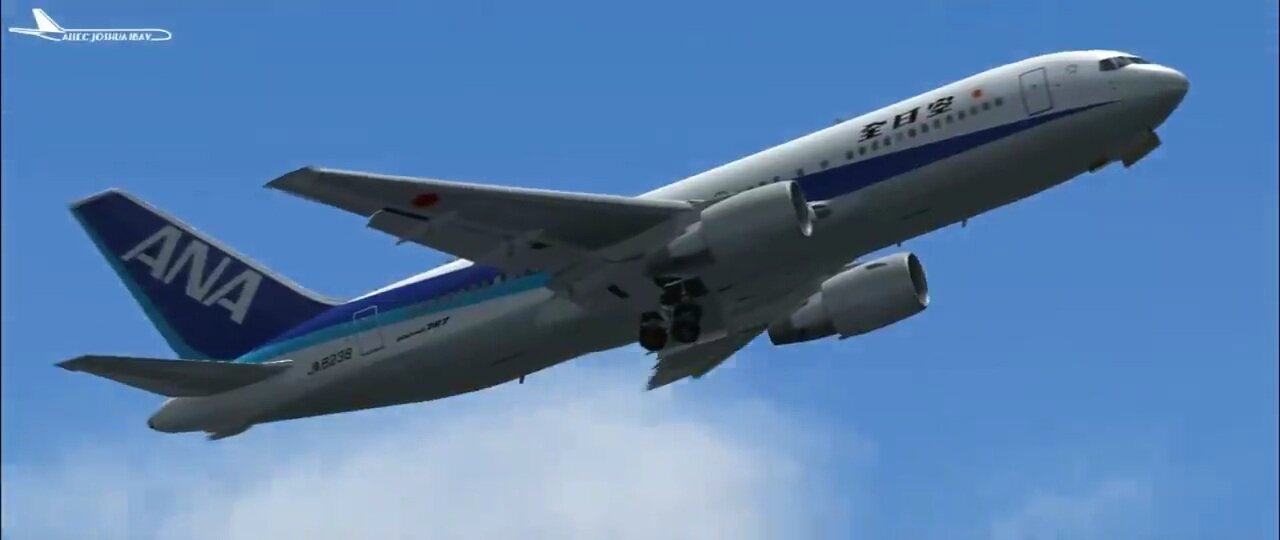Premium Only Content

Left On His Own | All Nippon Airways Flight 8254
Boeing 767-200 JA8254 took off from Shimojishima Airport at around 11:32 on a flight for takeoff and landing training. A captain acting as instructor occupied the right pilots seat. The left hand seat was occupied by a pilot undergoing training for promotion to first officer. First, trainee pilot-B made seven landings on runway 17 from the left pilots seat, including two landings with one engine simulated inoperative, and a go-around with both engines operative. He then changed places with trainee pilot-A. At around that time, the wind direction changed from the south to the west, and the aerodrome control tower instructed a change to runway 35. Trainee pilot-A then made two landings on runway 35 with both engines operative, and then switched to landing with one engine simulated inoperative. The first landing was made with the left engine simulated inoperative. After that, during a landing with the right engine simulated inoperative, the touch down was late and the trainee pilot attempted to go-around with go-around thrust on the left engine only. A few seconds later the instructor increased power on the right engine to go-around thrust, but at that time even though the left engine thrust had started to increase the right engine was still at minimum idle thrust. As a result, a thrust imbalance occurred between the left and right engines while right rudder was being applied, and the aircraft rolled and yawed to the right. Although the trainee pilot and the instructor attempted to correct the attitude changes, the aircraft veered off the runway into a grass field on east side of the runway and came to a stop around 1,990 m from the point it had first touched down.
Probable Cause:
PROBABLE CAUSE: "It is estimated that the accident was caused as follows:
The aircraft was being operated on a training flight at Shimoji-Shima Airport, and was making a one-engine-out touch-and-go landing with the right engine simulated inoperative. The touch down was late and beyond the normal aim point, and on the direction of the instructor, the trainee pilot attempted to go around on only the left engine. However, the trainee mishandled the aircraft, and then, seeing the instructor advance the right engines thrust lever, he applied right rudder pedal mechanically. This coincided with an increase in the rotation speed of the left engine, and the aircrafts attitude suddenly changed towards the right. Because the trainee pilot could not fully correct this and the instructor was late in taking over control, the aircraft veered off the east side of the runway into a grass area and was damaged.
Moreover, it is estimated that the following causal factors contributed to the accident:
(1) The instructor did not take over when he directed the trainee to go around, or at an earlier stage, because he thought to allow the trainee pilot to handle the aircraft as much as possible, and because he did not sufficiently recognize that a go-around with one-engine simulated inoperative is a difficult maneuver for an inexperienced pilot.
(2) Regarding the instructors intent to allow the trainee pilot to handle the aircraft as much as possible, the companys instructional guidelines contained statements meaning that a judgment to go around should be made by the trainee pilot, and that during simulated one-engine-out touch-and-go training landings, the go-around after landing should continue with one engine simulated inoperative.
(3) Regarding the instructors insufficient recognition of the difficulty of a go-around with one engine simulated inoperative for an inexperienced pilot, the instructor had not been trained to deal with the situation encountered in the accident, and the companys regulations and manuals did not describe considerations on the difficulty of executing a go-around with one-engine simulated inoperative for an inexperienced pilot or on the effects of the wind on such maneuvers.
(4) Regarding the delay in the instructor taking over control of the aircraft, the instructor was not following with his hands on the control wheel and was not in a position to take over immediately if necessary, and when the instructor had changed from being a simulator instructor to a flight instructor, he had not received sufficient training on cautionary matters regarding training in actual aircraft."
-
 LIVE
LIVE
Glenn Greenwald
3 hours agoBiden Pardons Hunter After Months Of Vowing He Wouldn't; Plus: Biden's Career Imprisoning Crack Addicts | SYSTEM UPDATE #374
6,387 watching -
 LIVE
LIVE
Barry Cunningham
14 minutes agoBANNED ON YOUTUBE SERIES: Inside The Border Crisis! Barry Cunningham Interview With Border Agent
3,404 watching -
 LIVE
LIVE
WeAreChange
2 hours agoCOUP ATTEMPT?! Dems Trying To Usurp Control Of Military In Move Against Trump
3,373 watching -
 LIVE
LIVE
Josh Pate's College Football Show
28 minutes agoCFP Rankings Reaction | Conference Championship Predictions | New JP Poll | Portal Chaos Ahead
69 watching -
 LIVE
LIVE
The StoneZONE with Roger Stone
2 hours agoWill America’s Sheriffs Aid the Deportation of Violent Illegals? w/ Sheriff Richard Mack | StoneZONE
251 watching -
 LIVE
LIVE
RamrodJenkins
2 hours agoI am loving Rumble! Come on by and hang out!
69 watching -
 LIVE
LIVE
Patriots With Grit
2 hours agoHow To Influence Your State Leaders : The Will Of The People | Raj Doraisamy and Mason Weaver
34 watching -
 1:41:51
1:41:51
Redacted News
5 hours agoBREAKING! NEW DEEP STATE PLANS TO STOP TRUMP EXPOSED BY CONGRESS, BILL GATES VACCINE PLAN | REDACTED
174K376 -
 2:19:59
2:19:59
Barry Cunningham
7 hours agoTRUMP DAILY BRIEFING: How Trump Got The Democrat Party To Destroy Itself!
52.7K25 -
 LIVE
LIVE
Akademiks
9 hours agoYSL Case Ends! Yak Gotti found NOT GUILTY! Kendrick Lamar announces STADIUM TOUR! MIA Mad bout Jay z
2,796 watching